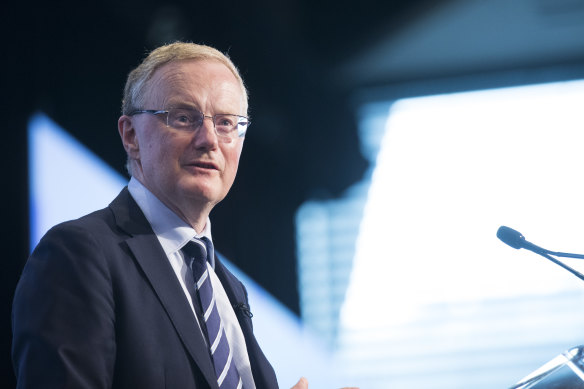
All this is why the latest leap in inflation has led some economists to worry that, if expectations become “unanchored”, inflation may become entrenched at a much higher level.
This fear explains why many are anxious to use higher interest rates to get actual inflation back down ASAP. If falling real wages help to speed the process, so much the better.
Two small problems with this. For a start, there’s little evidence – either here or in the other rich economies – that expectations have moved up. Sensibly, everyone expects that, before too long, the inflation rate will go back to being a lot lower.
Our modern oligopolised economy gives many big businesses a lot of power over the prices they’re able to charge.
In the real world of price-setting by firms and workers, it takes a lot longer for expectations to shift prices than it does for prices in share and other financial markets to bounce around.
But the deeper reason worries about worsening expectations are misplaced is that, since this theory became so influential in the ’70s, the mechanism by which the expected inflation rate becomes the actual rate has broken down.
Businesses retain the ability to raise their prices when they decide to – and to discount those prices should they discover they’ve pushed it too far and are losing sales - but organised workers have largely lost their ability to force employers to grant higher pay rises.
If you doubt that, ask yourself why the number of days lost to strikes is now the tiniest fraction of what it was in the ’70s. We’ve seen a little strike action lately, but it’s coming almost wholly from workers in the public sector – the main part of the workforce that’s still heavily unionised.
But the breakdown of the inflation-expectations theory and the “wage-price spiral” as explanations of the relatively modern phenomenon of inflation – a continuing rise in the general level of prices – leaves us looking elsewhere for explanations.
A big part of it is the message those economists who specialise in studying competition have to give financial economists such as Lowe: you don’t seem to realise that our modern oligopolised economy gives many big businesses a lot of power over the prices they’re able to charge.
Oligopoly is about the few huge firms dominating a particular market reaching a tacit agreement to keep prices high and stable, and limit their competition for market-share to non-price areas such as product differentiation and marketing.
Loading
As former competition czar Rod Sims has pointed out, this greatly reduces the ability of higher interest rates to influence prices in many big slabs of the economy.
But if many big businesses can improve their profitability by deciding to raise their prices, why did they wait until only a year ago to decide to start whacking up them up? Because it ain’t that simple.
All firms would like to raise their prices all the time. What stops them is the knowledge that they can’t charge more than “what the market will bear”. They worry about two things: what will my competitors do? And what will my customers do?
When there’s a big rise in input costs, the knowledge that all my competitors are facing the same cost increase gives me confidence we’ll all be passing it through to the customer at the same time.
That’s why it was the sudden, large and widespread increase in the cost of imported inputs caused by the pandemic and the Ukraine war that started the latest bout of prices rises at the retail level.

RBA governor Philip Lowe’s says “inflation psychology” is just as important as “inflation expectations”.Credit: Bloomberg
But, as Lowe keeps saying, the supply chain cost increases don’t explain all the rises in retail prices. He makes the obvious point that firms find it easier to raise their prices at a time when demand is strong and people are spending. His interest-rate rises are intended to stop demand being so strong and conducive to price rises.
But the less obvious point – especially to people mesmerised by the neoclassical way of thinking – is the role of psychology. I’ve got a great justification for increasing my prices, but no one’s counting. If my costs have risen by 5 per cent, but I increase my prices by 6 per cent, who’s to know?
Sims reminds us that this is just the way firms with pricing power behave. They raise their prices and profits in ways that aren’t easy for their customers to notice.
That covers big business. In the main, small businesses don’t have much pricing power. But “what the market will bear” is greater when the media has spent months softening up their customers with incessant talk about inflation and how high prices will go.
Lowe can’t say it, but it’s not uncooperative workers that are his problem, it’s businesses using the chance to slip in a little extra for themselves.
Ross Gittins is the economics editor.
The Business Briefing newsletter delivers major stories, exclusive coverage and expert opinion. Sign up to get it every weekday morning.









 Add Category
Add Category